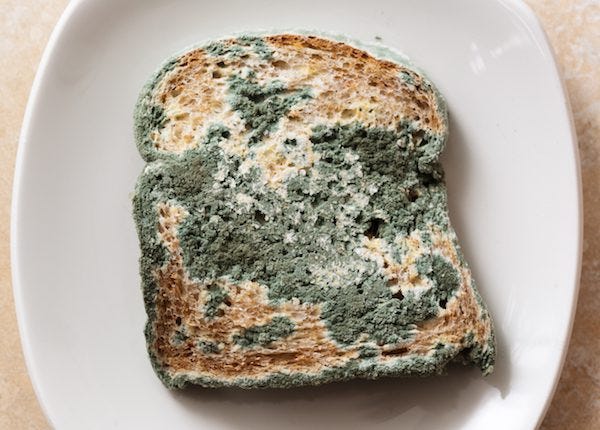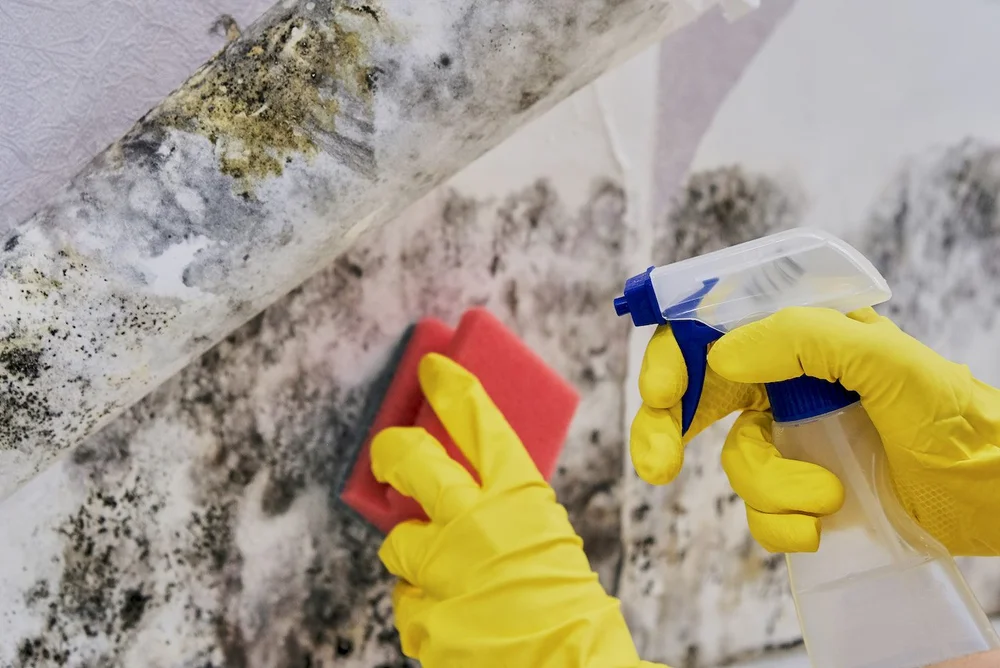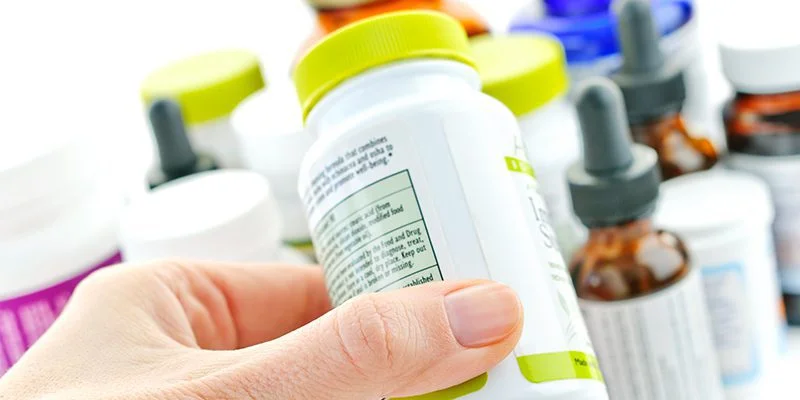What Are the Dangers of Mold in Your House?
Like many people, you’ve probably been stuck at home a lot over the last year. Maybe you’ve had to work from home. Perhaps your kids have been doing online learning as well.
Spending more time at home has certain advantages. It can help you save money on gas (from not having to drive to and from work or drive your kids to and from school or other activities). It also can help families have more quality time together.
Unfortunately, there are drawbacks to spending excess time at home. One of these can be your home itself. Depending on the climate where you live and the age and condition of your house, it may contain hidden hazards to your health.
In addition to potentially harmful materials and toxic gases, such as asbestos and radon, another unseen invader in your home might be mold.
What is Mold?
Mold is a type of fungus that can be found nearly everywhere in nature. Though not all types of mold are harmful, some release toxic gas and spores into the air. When these toxins enter your body, via skin or air, they can have damaging effects on many organs, including your immune system and brain.
Often confused as allergies or just “feeling out of it,” exposure to mold can affect cognitive function, especially in the frontal area of the brain.
The toxin-producing Stachybotrys (“black mold”), as well as other neurotoxic molds, including Aspergillus, Chaetomium, and Wallemia, can have a dramatic effect on the brain and behavior. Certain species of Aspergillus and Penicillium have been strongly linked to upper respiratory problems, especially in children. Certain species of Alternaria, Candida, Cladosporium, and Fusarium also may be culprits in lung and other respiratory problems.
There are 2 main documented effects of mold exposure: irritations of the physical airway like allergies or a cough, and the more concerning effects on the central nervous system (CNS) and the brain.
Dangers of Mold
Mold exposure can negatively impact physical health and mental well-being. The primary physiological effects of mold exposure include inflammatory or allergic responses and toxicity.
Common physical reactions to mold include:
- chills
- cough
- eye irritation
- nasal stuffiness
- skin irritation
- wheezing
Among the many CNS responses are headaches, brain fog, confusion, fatigue, irritability, and sleep issues. Mental health problems can include mood issues, memory loss, or other forms of cognitive impairment.
The severity of these issues depends on multiple factors, such as the potency and duration of the exposure. Also, a person’s age and genetics, health and nutritional status, and other toxic burdens (such as exposure to glyphosate, heavy metals, xenoestrogens, pesticides, and other toxins associated with lifestyle choices) may play a role.
Mycotoxins
Mycotoxins, which are toxic metabolic products made by some fungi, can make symptoms worse. In addition to a broad spectrum of mycotoxins produced by household molds (many of which are mentioned above), unhealthy factory farming practices have led to the U.S. having some of the highest levels of outdoor mycotoxins in the world.
These harmful substances can have a direct effect on the brain’s systems of neurotransmitters. A growing body of evidence shows that some patients with serious memory problems may have been infected with these fungi or exposed to other certain toxins.
Mold and mycotoxins can have other serious consequences, including harmful effects on children’s lungs, immune systems, and cognitive development. In children and adults, they also can cause negative changes in the gut’s microbiota composition, endocrine disruption, and a range of dysfunctional effects on immunity.
So, what can you do to ensure your house is a safe place? Here are some of the best ways to keep mold and other toxins out of your home…
3 Natural Ways to Prevent Mold Exposure in Your Home

- Check Your Home
Since the 1950’s, when drywall began replacing plaster, reports of mold infections have significantly increased. The presence of moisture can cause drywall and practically every other home construction surface to grow molds and other fungi, none of which are good for us.
It’s estimated that half the buildings in the U.S. may be water damaged. Construction methods in the U.S. can be a feast for mold and fungi, which thrive on drywall and wood. Our homes are often built of these soft materials rather than stone or brick, as is more common in Europe.
Mold flourishes in dark and moist environments. A small drip from a leaky toilet, shower, or sink is all it takes to create a major mold problem. Some studies have linked higher rates of asthma in some communities to living in older homes that are poorly maintained and harbor moisture leaks, which can produce mold populations.
A roof leak may initiate a mold problem. If you see a stain on the ceiling or wall, it’s a good bet there’s a hidden mold growth behind it. Mold also can lurk behind the walls of a shower, as well as in air ducts, crawl spaces, attics, basements, and other areas inside your house.
If you suspect that you’ve been exposed to mold, it’s essential to remove yourself from the environment until it can be cleaned up. Mold exposure can be toxic to brain function, including memory and other cognitive functions.
If you develop signs of possible mold exposure, such as sneezing, coughing, watery eyes, and skin irritation, don’t delay in making an appointment with a mold specialist. If your child develops asthma or other respiratory problems, or sudden difficulties with learning, it would be prudent to have your home inspected for mold.
In many cases mold, carbon monoxide inhalation, or other toxins can damage the brain and result in decreased neurological function including memory loss, noticeable personality changes, and difficulty concentrating. Toxic exposure, and its effects on the internal structure of your brain, can be debilitating over the long-term.
- Purge Your Pantry

Certain molds can affect crops, which are then passed on to the foods you eat. It’s estimated that as much as 25% of the world’s grain crops may be contaminated with mycotoxins. Many of the packaged and processed foods in the standard American diet are contaminated with these grains.
Here are some of the most harmful mycotoxins that have been found in our food supply:
- Aflatoxins come from Aspergillus flavus and Aspergillus parasiticus, known carcinogens that may occur in food due to mold growth and are often found in corn and peanuts.
- Deoxynivalenol, commonly known as vomitoxin, is a natural toxin produced by several molds that are common contaminants of grains, including barley, corn, rye, and wheat.
- Fumonisins are natural toxins produced by molds that are common contaminants of corn and have been found in cornmeal and breakfast cereals.
- Ochratoxin A is a naturally occurring, kidney-toxic product of various molds and is a contaminant of cereals, including barley, corn, oats, and wheat.
- Patulin is a toxic substance produced by Penicillium, Aspergillus, and Byssochlamys molds that grow on apples and may be present in rotten or damaged apples that are used to make apple juice.
Other foods in which mold and mycotoxins have been found, most typically when stored in moist environments, include processed meats (sausage, salami, hot dogs), berries, coffee beans, and alcohol (beer, wine).
While it may be impossible to completely avoid foods that contain mold, it’s recommended to exercise caution when eating bread, cheeses (hard and soft varieties), and some fruits (strawberries, grapes, oranges) and vegetables (tomatoes, bell peppers, cauliflower) that are prone to growing mold.
If something in your fridge is borderline, apply the adage “when in doubt, throw it out.” It’s better to lose a little food and money than to risk mold exposure.
- Get a Test
Mold exposure is often misdiagnosed and mistreated, which can lead to long-term suffering from the distressing complaints of mold toxicity.
If you think you may have a mold infection, the first three things you should do are:
- Get your house inspected by a lab that knows how to test for mold
- Boost your detoxification pathways
- Increase your levels of vitamins and minerals (including vitamin C, vitamin D, and zinc) to support your immune system
Next, get a personal mold test from a physician who has proven experience diagnosing mold toxicity. The workup for a leading mold protocol can include tests that are widely available at LabCorp and Quest Diagnostics, including MMP–9, TGF beta 1, MSH, and VEGF. Urine testing for mold toxins circulating in the body can also be utilized.
However, these tests might be pricey and none of them can give solid confirmation you’ve been exposed to mold. Be advised that the efficacy of these tests has been questioned by some mold specialists.
Unfortunately, going to your healthcare professional might not provide answers or relief from your issues. If you explain your problems to your primary care physician or a mental health professional, there’s a high likelihood that mold won’t be considered as a possible cause. It simply isn’t on the radar of many physicians.
Avoid Household Mold
The more exposure you have to the types of mold and toxins mentioned above, the more your chances of developing long-term mental or physical health issues.
To minimize your chances of being exposed to mold, especially if you know your home has pockets of moisture, be sure to get your house tested for mold. Also, purge your pantry and refrigerator of foods that are potentially high in mold.
If you think you’ve been exposed to mold, get out of the house until it can be tested, and get yourself tested by a mold specialist who can properly diagnose and treat your issues.
Taking these steps can put you on the path to living a mold-free life.
At BrainMD, we’re dedicated to providing the highest purity nutrients to improve your physical health and overall well-being. For more information about our full list of brain healthy supplements, please visit us at BrainMD.




Excellent article on a very difficult topic.
Absolutely fascinating article! It’s alarming how many health risks are associated with household mold exposure, and how it’s often overlooked as a cause for certain symptoms. I found it particularly interesting how mold can not only cause physical reactions, but also affect our cognitive functions and mood. This highlights the importance of maintaining a safe and clean home environment for the sake of our overall health.
To further stress the significance of the points raised here, I’d like to mention how our environment can also play a role in enhancing our wellness. For instance, installing a home sauna can serve as a proactive measure for health promotion. Regular sauna sessions have been linked to potential benefits like stress relief, improved sleep quality, and perhaps even cognitive benefits, which can potentially counterbalance some of the ill effects of mold exposure mentioned in the article.
Of course, this is not to say that saunas are a solution for mold issues. Rather, it’s about creating a holistic, health-promoting environment at home. Regularly checking for mold, using dehumidifiers in damp areas, and ensuring proper ventilation are still crucial steps to minimize mold exposure risks.
On a side note, wine cellars can also contribute to a healthy lifestyle, if maintained properly. Certain wines, when consumed in moderation, offer various health benefits, including antioxidants and potential heart health benefits. But proper storage is key to maintain these benefits, and good cellar management can prevent mold and other damage to the wine.
Overall, it’s evident that maintaining our living spaces, ensuring they’re free from health hazards like mold, and incorporating health-promoting elements can have a significant impact on our overall well-being. It’s always a good idea to have your home checked for mold, especially if you or a family member are experiencing symptoms that could be associated with mold exposure. Thank you for shedding light on this important issue, Keith!
Great article! The presence of mold in your home can pose several dangers to both your health and the structural integrity of the building. Mold releases spores into the air, which, when inhaled, can trigger respiratory issues, allergies, and even infections in susceptible individuals. Prolonged exposure to mold may lead to chronic health problems. Additionally, mold can cause damage to walls, ceilings, and other surfaces, compromising the structural integrity of your home. It’s crucial to address mold issues promptly, ensuring thorough cleaning, proper ventilation, and addressing the underlying moisture source. Seeking professional assistance may be necessary for extensive mold infestations. Remember, taking proactive steps to prevent and address mold can help safeguard your health and preserve your home.